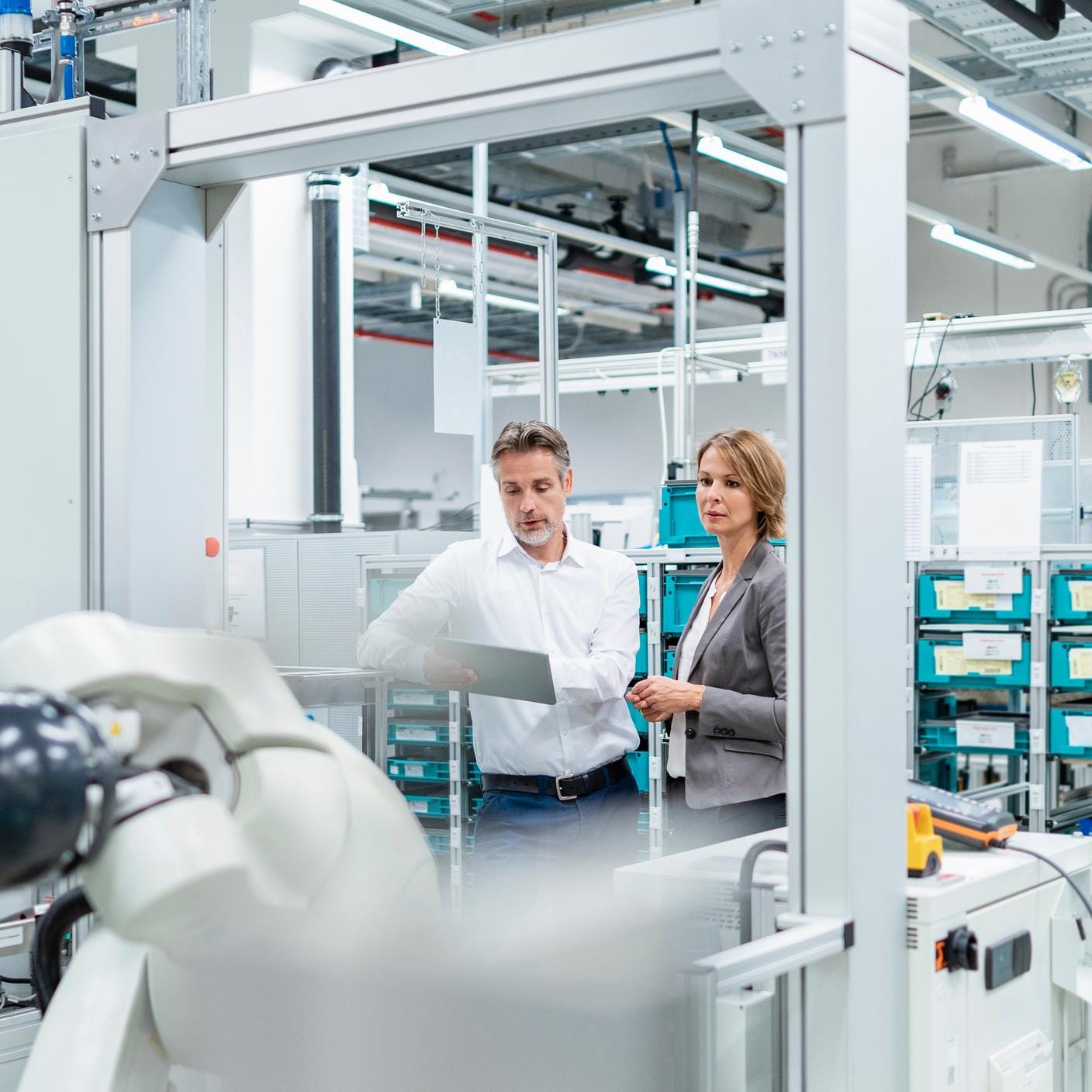The retail and consumer packaged goods (CPG) industries are experiencing a dynamic period of transformation, creating new opportunities for organizations to innovate and thrive.
Consumer demands are evolving, and expectations – particularly around sustainability and ESG, as well as product availability and accessibility – are increasing.
For example, 83% of consumers believe brands should be actively shaping ESG best practices, while 84% say sustainability is a very important factor in their purchasing decisions.
It’s understandable, given that 45% of the world’s emissions come from making and consuming products.
Product availability is important too. When quizzed across a range of categories, 88% of consumers held concerns about the availability of groceries to 47% who had concerns over the availability of luxury goods.
These demands, in turn, create avenues for brands to lead, innovate, and differentiate themselves in the market.
Retailers today have unprecedented insight into consumer demand and behavior, creating opportunities for extreme personalization. The ever-growing use of AI, meanwhile, means that efficiencies can be realized and new business models and practices established.
The landscape is evolving rapidly, and a new report has identified three key global macrotrends – optimized reality, ethical impact and whole-system planning – that are currently transforming the sector.
Adapting to market challenges and opportunities, embedding innovation, and further embracing new technologies can enable retail and CPG brands to stay ahead of customers, lead meaningful change, and thrive.
Optimized reality: creating a new reality through technology
Customer expectations and demands are continuously evolving, and a seamless blend of the physical and virtual is now demanded by 75% of consumers (however, only 25% are currently satisfied with the experience delivered.)
The next wave of technological evolution is seeing brands establish themselves as fundamental parts of everyday life, removing barriers to entry, increasing accessibility, and fostering deeper customer understanding and demand forecasting – ultimately enhancing both customer experience and business growth.
Central to this is gaining a deeper understanding of the customer, creating ever-more personalized opportunities for customers to connect. More than 70% of consumers expect personalization and are frustrated when they don’t receive it.
Anticipating customer needs can enable organizations to streamline – if not eliminate – the path to purchase, with brands understanding customers so deeply that in many cases, they preempt needs.
This can have a major impact on the bottom line, too, with data suggesting that companies that excel at personalization generating 40% more in revenue than those who don’t do personalization quite as well.
Todd Redwood, Global Managing Director - Consumer, Retail and Food at BSI says that retail is undergoing a transformative period, and understanding customers and their needs is more crucial than ever.
“By using predictive analytics, customers are matched with the right products at the right place and time, boosting sales, reducing waste, and anticipating supply chain disruptions.
“Additionally, smart systems monitor shelf life and automatically apply discounts to products nearing their use-by date, significantly reducing issues such as food waste.”
Of course, data and algorithms become ever more critical here, with brands using data-driven insights to predict customer desires and needs – even before the customer is aware of this.
From apps that guide customers to find AI-recommended products that best suit their needs and smart home devices automatically reordering products, to retailers using technology to best understand store layouts and stock optimization, retailers and brands need to understand where they can best use technology to realize opportunities.
Demand for AI integration is here. Sixty percent of consumers would like to use AI applications as they shop for tasks including product research, service, looking for deals or promotions, or reading reviews or recommendations. And retail businesses are responding, with 74% providing information to customers about how AI is being used in the business or future plans to use it.
Redwood says that, to unlock the opportunities AI presents, businesses can consider practical steps such as robust processes, precise measurement tools, and adherence to established standards – as well as data security needs.
“By setting clear communication channels and establishing strong digital trust, companies can bridge the confidence gap and empower consumers.
“At BSI, our research highlights the importance of these steps in fostering a safe and responsible AI adoption, ultimately driving positive societal impact and progress towards sustainability."
Ethical impact: Sustainability is expected – and brands need to be able to tell their story
Brands are driven by consumer demand and sentiment – and consumers believe that brands have a leading role to play in ethical and sustainability initiatives, above and beyond government mandates, positioning themselves as industry leaders.
Every aspect of a product, from its packaging to its journey to the shelf, is scrutinized – while up to 80% of consumers are willing to pay more for sustainability. Showing the delicate balance, however, almost half of developed market customers believe it’s too expensive to live sustainably.
Food brands and retailers, for example, are increasingly helping consumers live healthier lives and make better dietary choices – a critical element in a sustainable food system that both helps the environment and may improve public health.
Redwood says that food brands can play a pivotal role in this.
“An essential component of a sustainable food system is that it benefits both the environment and public health.
“By leveraging technology, smart labels and apps that provide information on sustainable practices and better health choices, brands can enhance consumer knowledge and support informed decisions.
“This approach builds trust, loyalty, and market share while promoting improved public health outcomes. Aligning organizational success with societal impact creates a win-win scenario for both companies and consumers.”
Establishing those healthier outcomes for consumers, however, relies on manufacturers, suppliers, and retailers working together in a circular economy of shared values, assessing relationships on more than the traditional business metrics.
When selecting partners in the food value chain, Redwood says it’s important to prioritize those committed to sustainability.
“Look for certifications, transparent practices, and a proven track record in environmental and social responsibility. Measure and validate their sustainability efforts through third-party audits, performance metrics, and adherence to globally recognized standards. Collaborating with partners who share your values enhances the credibility and impact of your own sustainability initiatives.”
The same principles apply to other goods, too. Through establishing measurement frameworks that enable a deep knowledge and validation of suppliers and partners, by understanding everything from their approach to sourcing, to the way they treat their employees, organizations can both create a strong ESG story to rightfully tell, while avoiding the brand damage that comes with negative headlines.
A significant number of consumers seek referrals about a brand’s ESG credentials from a range of sources, including social media and company websites.
“Building a new value metric into your business framework involves integrating reputation, automation, sustainability, workforce well-being, and aligning with industry standards,” says Redwood.
“Start by setting clear, measurable goals for each area. Implement automation to enhance efficiency while maintaining a focus on sustainable practices. Prioritize the well-being of your workforce through continuous development and support, and ensure all practices align with industry standards to maintain compliance and credibility.
“This holistic approach not only strengthens your reputation but also drives long-term success and resilience.”
Manufacturers, producers and retailers often operate on tight margins, with technology, automation and AI used to gain efficiencies.
Already, retailers using AI have seen a 69% increase in annual revenue linked to AI adoption, while 72% have experienced a decrease in operating costs.
A key component of the ethical impact of retail and CPG organizations is the employment it provides, and rather than simply looking at automation as a cost-saver that can reduce headcount, organizations that succeed in the future will embrace the learning and deployment opportunities AI provides, creating time for staff to focus on customer interaction.
Redwood says that to thrive in today’s retail sector, implementing automation is essential.
“Identify opportunities for development and retraining to maximize efficiency and stay competitive. Embrace technology to streamline operations, enhance customer experiences, and empower your workforce through continuous learning and adaptation. BSI solutions can support this transition by ensuring the tools and systems in place are safe, effective and supported through training.”
The opportunities available through the implementation of AI need to be proactively, responsibly and ethically managed, and the world’s first AI management system standard (ISO/IEC 42001) provides valuable guidance in this rapidly changing field.
It addresses the unique challenges AI poses, such as ethical considerations, transparency, and continuous learning, and sets out a structured way to manage risks and opportunities associated with AI, balancing innovation with governance.
Whole system planning: creating sustainable organizations, and industries
Global health crises, environmental challenges, rising customer expectations, and global political uncertainty require careful navigation – but present significant opportunities for retail and CPG brands to evolve and improve.
By taking that perspective, organizations can better understand the interconnectedness of elements of business that may once have stood alone, ultimately helping them move from a linear mode of operating to a regenerative, circular economy.
Identifying opportunities for innovation in supply chains is important, and investing in startups can fast-track innovation from the perspectives of products and processes, business growth, and technology, enhancing both the internal business and a brand’s competitive advantage.
Redwood says that, when considering acquiring a startup, it’s important to evaluate its alignment with your organizations goals and values.
“Assess the startup's innovation potential, market fit, and scalability,” he says.
“Look at the team’s expertise and cultural fit with your organization. Weigh the benefits, such as access to new technologies and markets, against potential risks like integration challenges and cultural clashes. Ensure the startup adheres to industry standards and regulatory requirements to safeguard your reputation and investment.”
Digital business models can create environmental challenges logistically, with the shipping of products – and often their return – contributing to an environmental footprint.
Globally, more than 436 million parcels are delivered every day, and that has a huge sustainability impact, with the logistics industry responsible for 25% of global C02 emissions, according to the European Environmental Agency.
For retail and CPG brands, reducing that impact is key – with more localized deliveries, optimized route planning, and more agile manufacturing both a challenge and an important opportunity.
Route optimization technology can create a number of benefits, including enabling significant distance to be saved when delivering goods, and improving productivity and customer experience, while reducing fuel consumption. New retail models, meanwhile, are housing production, storage, and retail in one location.
“Identifying opportunities to reduce reliance on the supply chain involves diversifying sourcing strategies, investing in local distribution, and fostering strong relationships with regional suppliers,” says Redwood.
“Look for ways to produce key materials in-house and leverage technology to improve efficiency. By building a resilient and flexible supply chain, businesses can better withstand disruptions and ensure continuity.”
One of the biggest potential opportunities – and challenges – however, comes in the form of packaging, with consumers increasingly aware of the impact of used plastics and other packaging materials at the end of use.
Innovation is exciting here. Subscription-based business models for shampoo refills or household detergents, for example, have the potential to reduce the number of journeys made to purchase these items. These could utilize existing infrastructure to reach the end consumer.
Packaging will always be crucial in getting products to their intended destination in good condition. Understanding the needs of the product, and the demands of the supply chain, will help ensure brands and retailers are optimizing packaging.
"Embracing best practice packaging alternatives is crucial for sustainability,” says Redwood.
“Opt for biodegradable, recyclable, or reusable materials to reduce environmental impact. Evolving business models, such as adopting circular economy principles and integrating sustainable practices across the supply chain, not only benefit the planet but also enhance brand reputation and customer loyalty."
Many organizations have created initiatives, such as the Ellen MacArthur Foundation’s 8 Principles, to minimize the environmental impact of packaging on the environment.
These initiatives recognize the value of packaging, and the impact that small steps can make to keep valuable materials used for packaging in use for as long as possible – embodying a truly circular economy.
Defining your next step
The challenges facing the retail landscape may be broad, but they don’t have to be overwhelming. By implementing step-by-step principles, BSI can support your organization in understanding goals and establishing processes to measure, audit, and ensure safeguards are in place.
BSI helps you navigate changes to achieve a safe, sustainable future. By leveraging our extensive expertise, we help enhance sustainability, optimize supply chain efficiency, and ensure high production standards.
From technical standards, auditing (supply chain or ethical) to consulting and training, we can work with you in the most suitable way for your organization, helping to define the critical steps for your success, instilling confidence in your sustainability efforts.
Take the first step towards a more sustainable future with BSI. Contact us today to learn how we can support your business.





